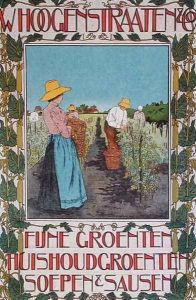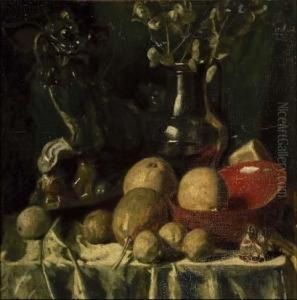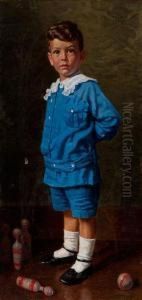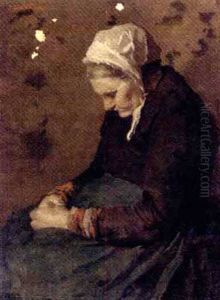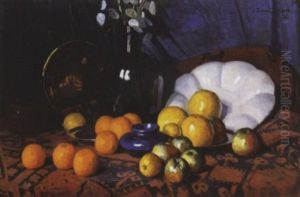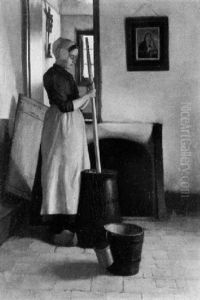Johann Georg van Caspel Paintings
Johann Georg van Caspel was a Dutch graphic artist and architect, born in 1870 in Amsterdam, Netherlands. He is most well-known for his contributions to the Art Nouveau movement in the Netherlands, particularly through his poster and graphic designs. Van Caspel's work is characterized by its intricate detail, vibrant colors, and the incorporation of natural forms, a hallmark of the Art Nouveau style.
After completing his education in architecture, van Caspel shifted his focus towards graphic design and illustration. This transition marked the beginning of a prolific career in which he created numerous posters, book covers, and advertisements, many of which have become iconic in the study of Art Nouveau graphic arts. His designs often featured floral motifs, elegant figures, and stylized lettering, blending functionality with aesthetic appeal.
Van Caspel's contributions to the field of graphic design were not only limited to his artistic creations but also included his role as an educator and influencer. He was actively involved in promoting the Art Nouveau style in the Netherlands and abroad, participating in various exhibitions and competitions. His work received considerable acclaim during his lifetime and contributed significantly to the international recognition of Dutch Art Nouveau design.
Johann Georg van Caspel's legacy extends beyond his death in 1928. His designs continue to be celebrated and studied for their artistic merit and historical significance in the evolution of graphic design and Art Nouveau. Through his innovative approach and mastery of design, van Caspel played a crucial role in shaping the visual culture of his time and left an indelible mark on the art world.
